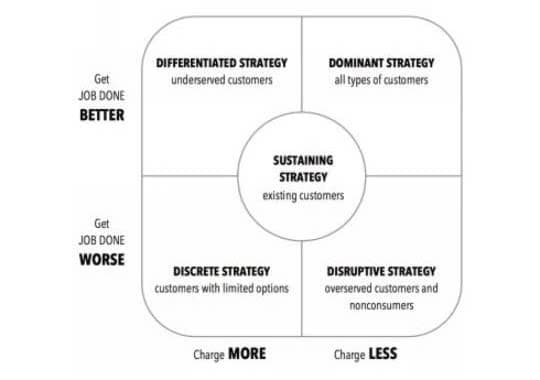Jobs to be Done: Theory to Practice
Today’s most popular approaches to innovation fall into one of two types: those that begin with a focus on solutions (or ideas) and those that begin with a focus on customer needs.
That about
sums up the book and you can guess where it goes from there. This book is about
everything I love and hate about business books: interspersed, great insights,
lots of filling, and ridden with not-so-humble showcasing of how incredible this
framework and their consultancy are (it would’ve been more credible if they
found examples of people who use the framework who are not them). The first
chapter (or two) is basically just Mr. Ulwick talking about how life-changing
this framework is, ugh, come on. Serve it to me and let me be the
judge.
So, let me compress this into “Jobs to be Done”, the good parts!
The title of the book is about the author’s desire to get people to frame
problems as “what job is the customer trying to do?” rather than “what does the
solution do?” Exemplified (most likely somewhere else in the book entirely,
since it’s not well-organized) an analogy I have to give some points for: If
you’re a stove-top kettle-maker you might say you’re building product to boil
water. That’s not the “job to be done” though, by your customers. They’re mostly
making hot beverages, like tea and coffee. If you don’t think this way, you open
yourself up to Keurig. Okay, cool. That’s a good way to rebottle the wisdom of
going to the ‘root cause’ rather than ‘proximate cause.’ Not 200-page good, but
decent.
The other thing in the book that I liked is this framework that
new products fit into. That’s a good way to think about it, kudos. Served here
without the 50 pages that likely explain it in the book:

Then there’s another few dozen pages about this way where they go out and talk to customers and graph it in a way that look scientific. That’s probably overkill. The important lesson is to define what people are actually trying to do and failing to do, rather than trying to weasel your solution into a customer demand. Not an uncommon insight, often praised, rarely done well (sadly). “people don’t want a quarter-inch drill, they want a quarter-inch hole.” If you go out and chat with people, note it down, and count them in a spreadsheet I think you’re in a decent spot here. You don’t have to make it look as scientific as the book preaches, I think, and they don’t do a good job of justifying the value or share any tools to do their analysis with. Minus points.
So, 2 stars because there’s a few quite good insights and I didn’t hate myself reading it (1 star)—but it’s every product-development wisdom wrapped in new vocabulary with so much fluff that reads more like show-off than easy for others to practise. I don’t doubt their methods work, but they’re not comparing apples-to-apples, they’re comparing themselves (it seems) against doing nothing because this is not revolutionary stuff.